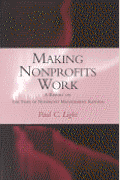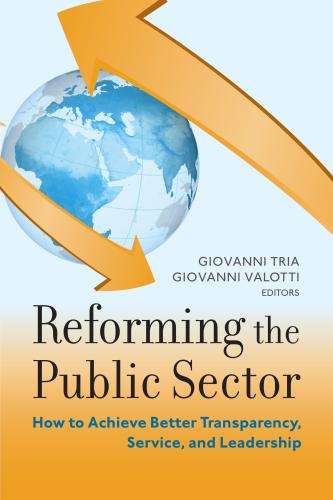Déjà vu? The economy is weak, workloads are up, and revenues are down; the nonprofit sector is once again under pressure to do more with less.
The sector has been here before and will be here again. Doing more with less appears to come with the IRS tax exemption letter. But unlike the federal government, the nonprofit sector cannot disguise its deficits by ignoring future liabilities or changing the start of the fiscal year. And unlike the private sector, it cannot shelter itself by eliminating unprofitable product lines, declaring bankruptcy, or falsifying profits. The nonprofit sector will do what it has always done: it will ask its workforce to work harder and longer, and its workforce will do just that.
The nonprofit sector will survive the current crisis because it has the most dedicated workforce in the nation. It is a workforce that comes to work in the morning motivated primarily by the chance to do something worthwhile, savoring the chance to make decisions on its own, take risks, and try new things, and puts mission above all else. The question is not whether the nonprofit workforce will tough it out through another year of cutbacks, pay and hiring freezes, and short staffing—its passion for the mission will give it the energy to keep going. Rather, the question is whether this workforce will be there for the next crisis. Gone are the days when the nonprofit sector could count on a steady stream of new recruits willing to accept the stress, burnout, and the persistent lack of resources that come with a nonprofit job. The vast majority of nonprofit workers come to work in the morning because they love their jobs, but many go home at the end of the day exhausted by the workload and unsure that they have the tools, let alone the stamina, to come back the next morning.
This “state of the nonprofit workforce” report provides a statistical confirmation of what many readers already know about their colleagues in the sector: that the workforce is strong, but their organizations are often weak. According to a telephone survey 1,140 randomly selected nonprofit employees conducted by the Brookings Institution’s Center for Public Service, nonprofit employees experience high levels of stress and burn out, and report that their organizations do not provide enough training and staff to succeed. When asked which one reform might improve their organizations, these employees mentioned just about every fad known to the field, but none mentioned the need for more advocacy, higher foundation pay-out, or a stronger defense across the sector as a whole. At least for these employees, every nonprofit is a tub on its own bottom.
The Brookings Institution is committed to quality, independence, and impact.
We are supported by a diverse array of funders. In line with our values and policies, each Brookings publication represents the sole views of its author(s).









Commentary
The Content of their Character: The State of the Nonprofit Workforce
October 2, 2002